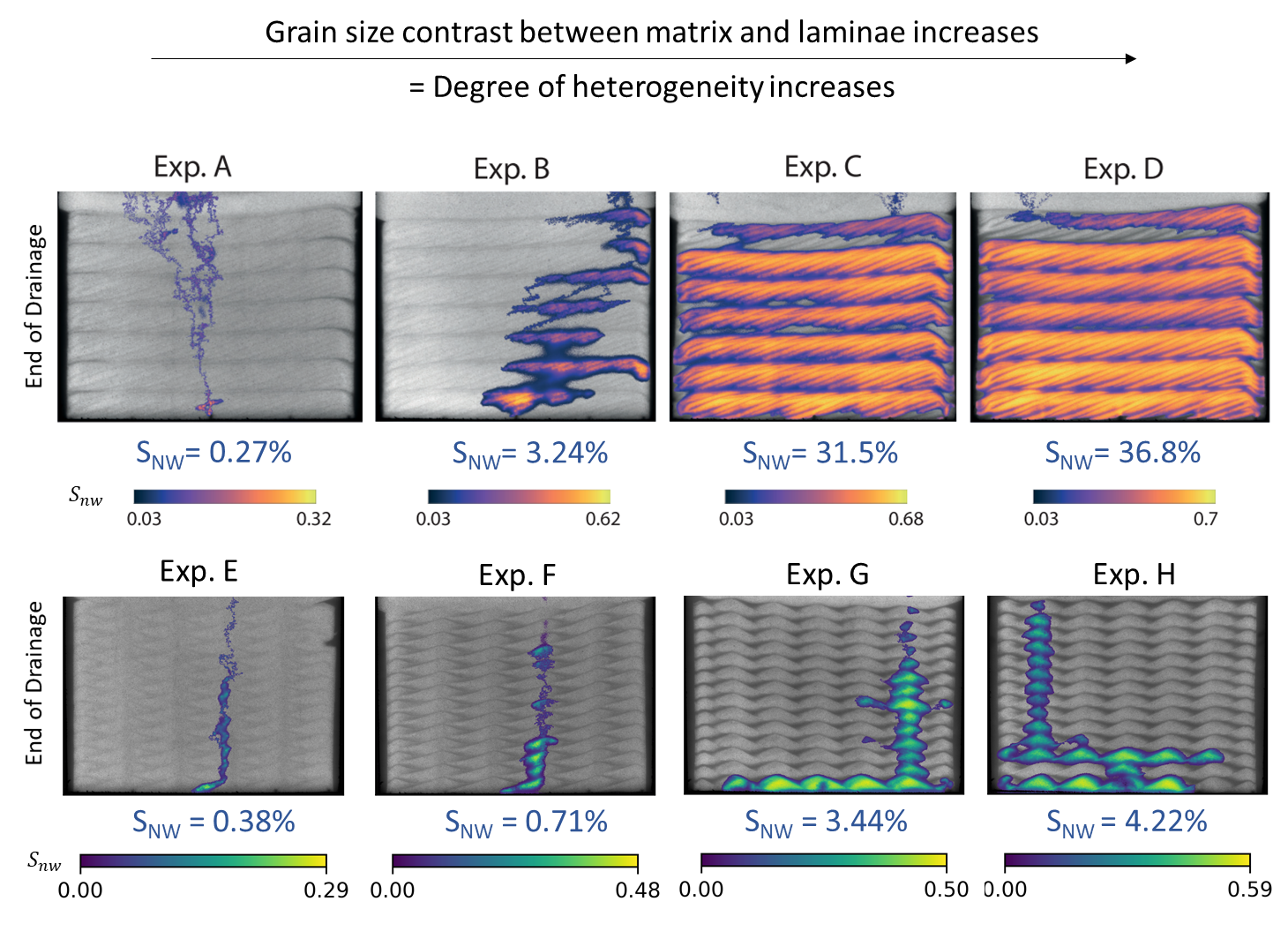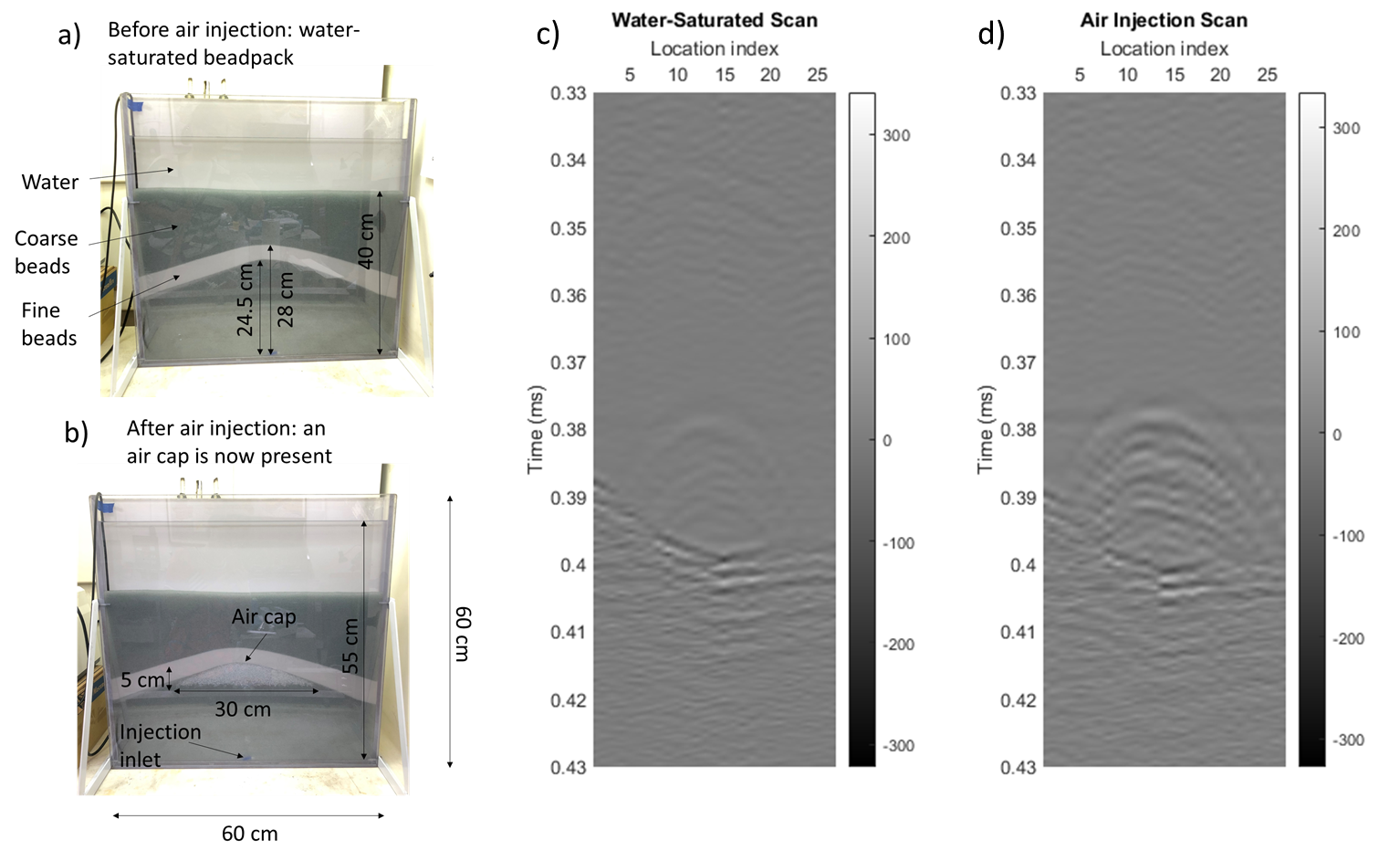2023 Sandbox Lab Results & Beyond
Introduction
The Sandbox Lab aims to better understand fluid flow in the subsurface. More specifically, we look at how different types and degrees of geologic heterogeneity affect the amount of CO2 secondary trapping for geologic carbon storage. In the lab, we work with 2.5-dimensional (D) flow cells at the meter scale and surrogate fluid pairs that represent supercritical CO2 and brine. The light transmission visualization method is applied to quantify the saturation field throughout the experiment. Currently, the lab has several different focuses:
Realistic Sedimentary Bedforms
With an in-house automated packing system, we are capable of engineering realistic sedimentary bedforms such as cross-laminated and ripple-laminated domains. Fluid flow experiments are conducted in these domains to model how much CO2 capillary or residual trapping can be retained by different types and degrees of heterogeneities as the plume migrates upward under buoyancy forces. Such sandbox experiments provide valuable data that can be used to benchmark any simulation and upscaling models that aim to capture the effect of small-scale heterogeneities.

Experimental results showing the amount of CO2 retention in two different types of realistic sedimentary bedforms with increasing degrees of heterogeneity.
Multiphase Flow Phenomena
Under the interplay of viscous, capillary, and buoyancy forces, nonwetting phase fluids (CO2, H2, air, oil, etc.) flowing in the brine-filled subsurface can demonstrate a variety of interesting multiphase flow phenomena such as hysteresis and flow pulsation. By adjusting the properties of the surrogate fluid, the injection condition, the sandbox tilt angle, and the heterogeneity of the domain itself, we can investigate how the various combination of forces and heterogeneities impact fluid flow in the subsurface.

Experimental results showing early breaching behavior caused by nonwetting phase flow pulsation, a dynamic multiphase flow phenomenon.
Lab-Scale Ultrasonic Sensing
In addition to the light transmission visualization method, it is also possible to use lab-scale ultrasonic sensing to image sandbox experiments. Using one ultrasonic sensor as the source and another as the receiver, we apply the same seismic reflection principles and are capable of acquiring ultrasonic images inside the sandbox. Because the nonwetting phase plume extent and saturation are known within the sandbox, this method can potentially be used to quantify uncertainty associated with time-lapse seismic imaging.

Experimental results showing the detection of a trapped gas cap in the sandbox by the lab-scale ultrasonic sensing method.
Last updated: June 26, 2023



